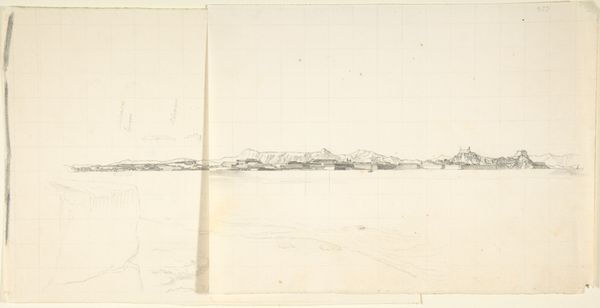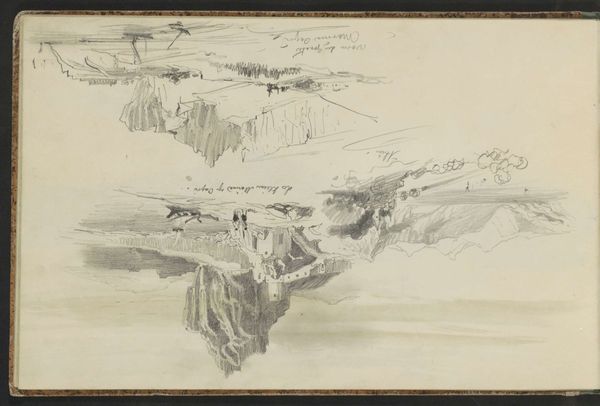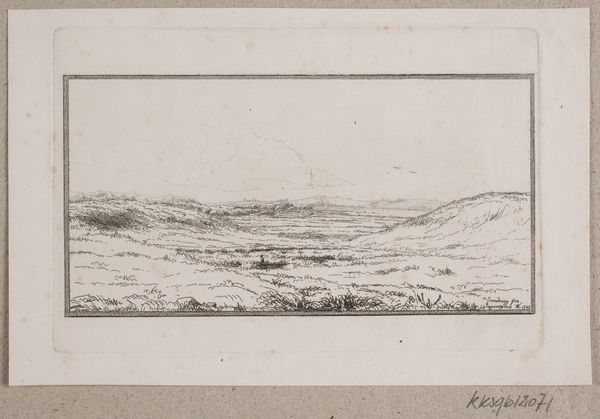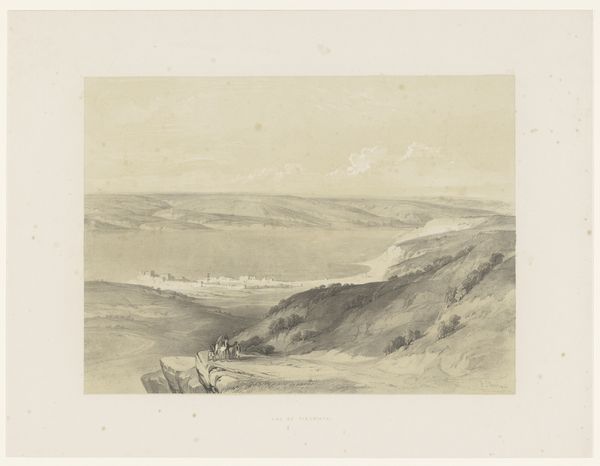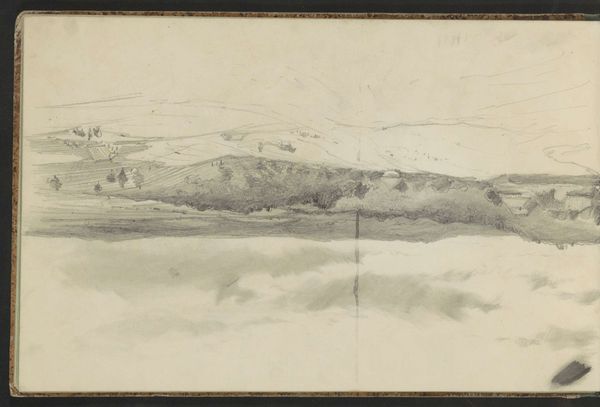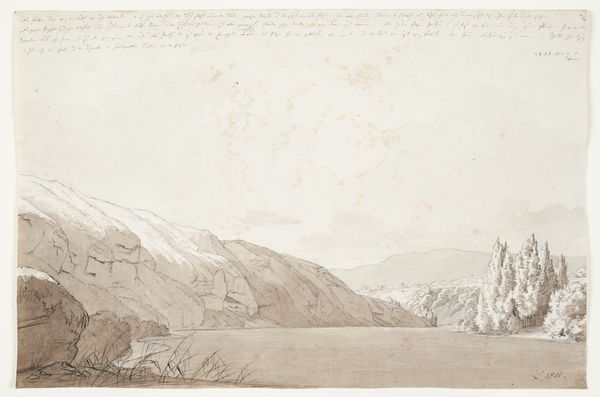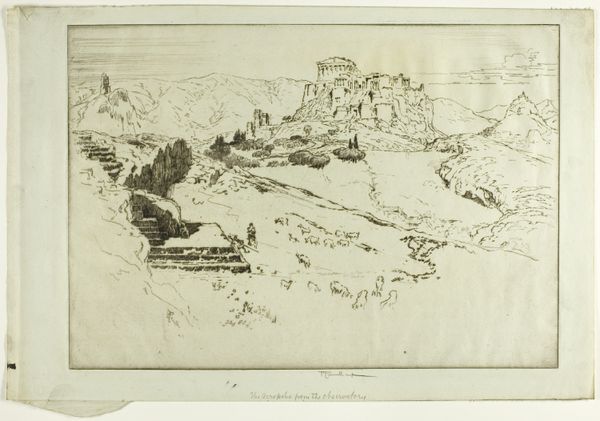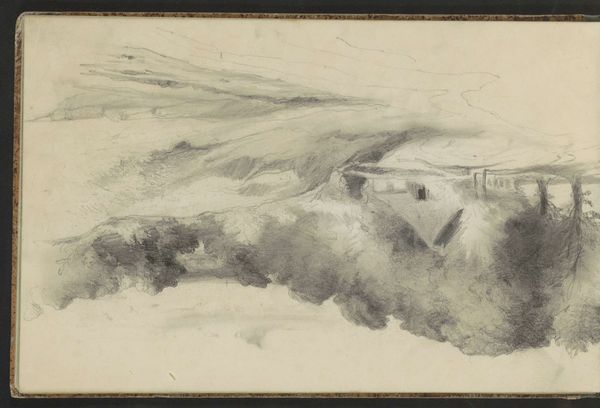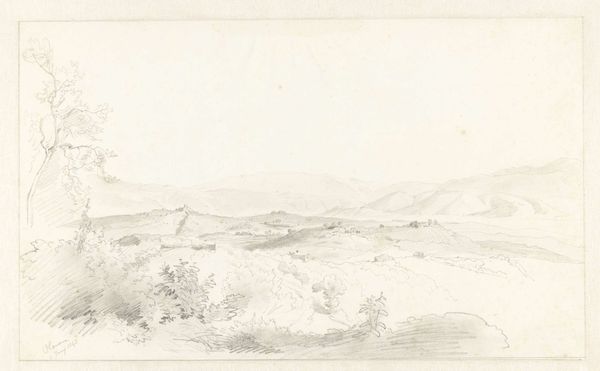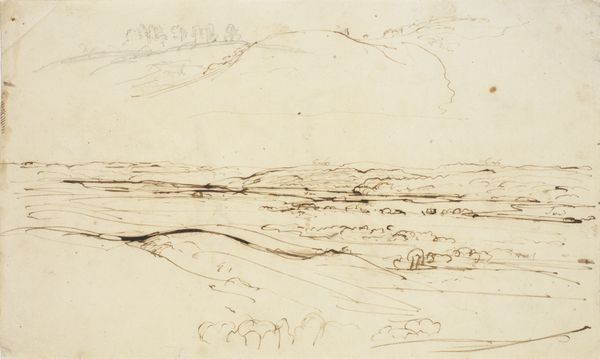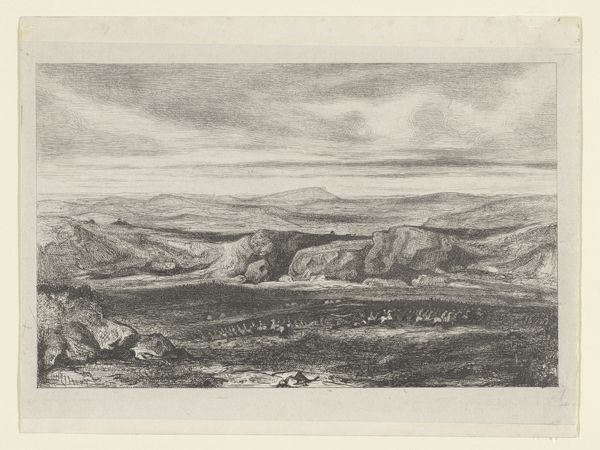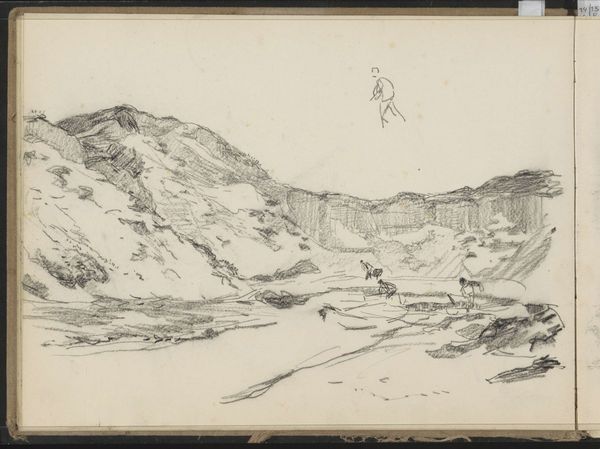
The Laying of the Atlantic Cable at Foilhommerum Bay, Ireland 1865
0:00
0:00
Dimensions: overall: 23 x 32.1 cm (9 1/16 x 12 5/8 in.)
Copyright: National Gallery of Art: CC0 1.0
Editor: This is "The Laying of the Atlantic Cable at Foilhommerum Bay, Ireland," a pencil drawing from 1865. It has a quiet, almost stoic feel to it, observing a technological feat against a stark, natural landscape. What do you see in this piece? Curator: I see a visual representation of power, specifically colonial and technological power, masked in a seemingly benign scene. The Atlantic Cable wasn’t just about connecting continents; it was about facilitating faster communication for trade, military control, and the spread of Western ideologies. The "laying" itself implies a dominance over the natural world, wouldn't you say? Editor: That makes a lot of sense. I was mostly thinking about the landscape aspects of it. Curator: Think about who benefits from this technological "progress." While the drawing doesn’t explicitly depict individuals, we can infer the presence of laborers, engineers, investors, and political actors – primarily white, Western, and male – whose interests were served by this endeavor. What stories are left untold? What about the environmental cost or the indigenous populations potentially impacted? Editor: It’s a much more layered image than I initially perceived! So, the romanticized style kind of veils some underlying issues. Curator: Exactly! The soft pencil strokes and scenic composition may even romanticize a project rooted in political and economic motives. The drawing almost normalizes these technological advances within a system of expanding imperialism. The question, then, becomes: whose narrative does this image serve, and whose does it silence? Editor: I'll definitely look at art differently now! It seems crucial to ask not just what we see, but who benefits from what we are seeing. Curator: Precisely. Questioning the social and historical context transforms how we experience art and allows us to unpack the power dynamics embedded within.
Comments
No comments
Be the first to comment and join the conversation on the ultimate creative platform.
